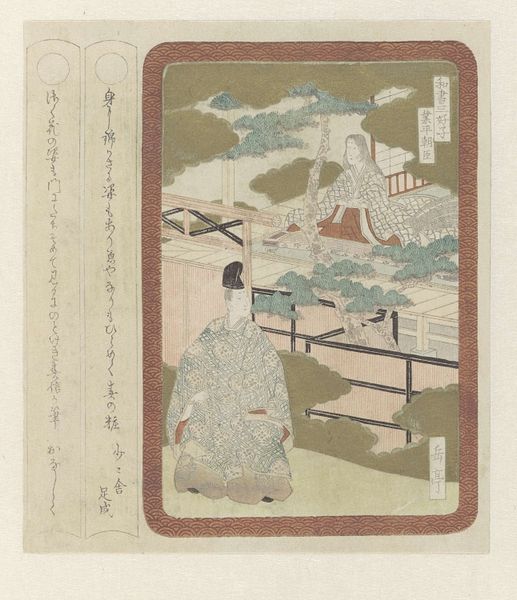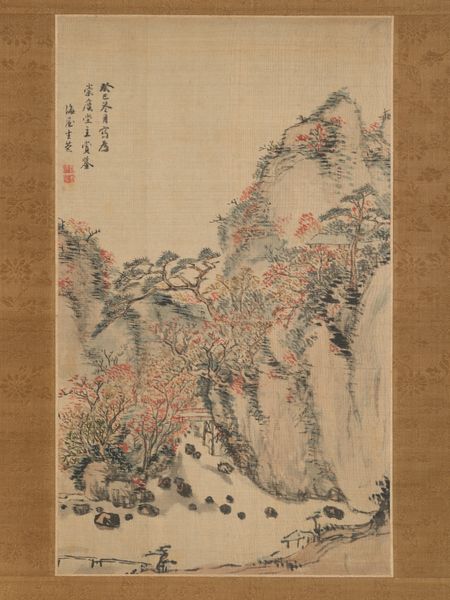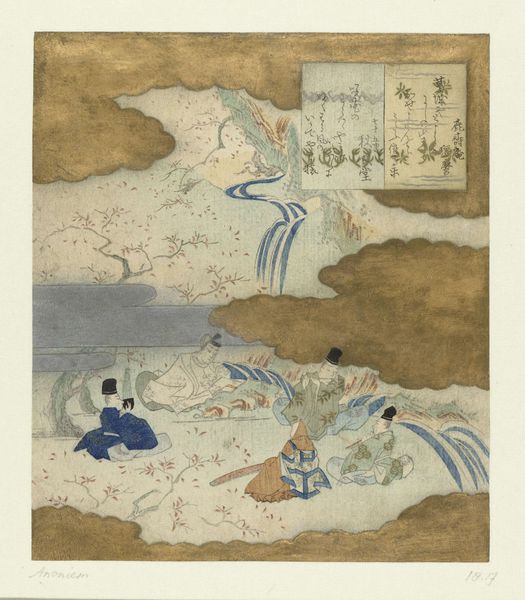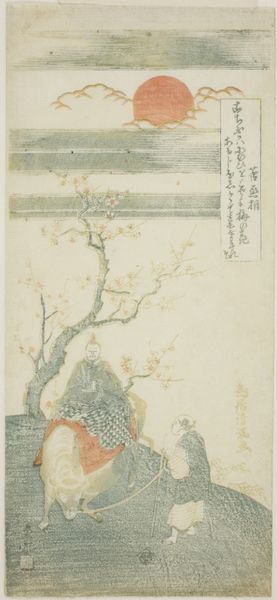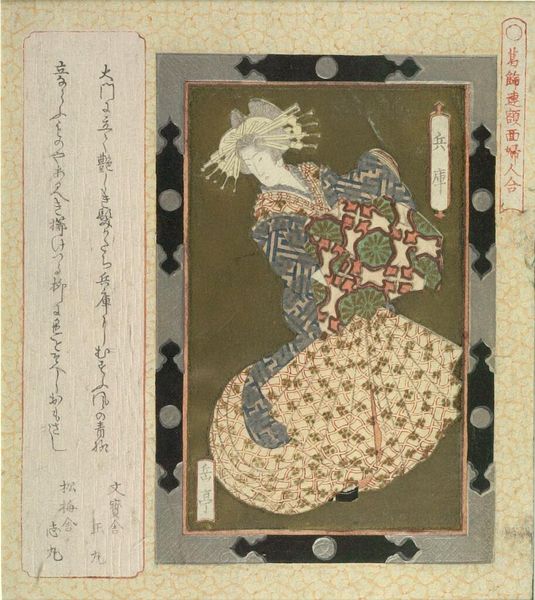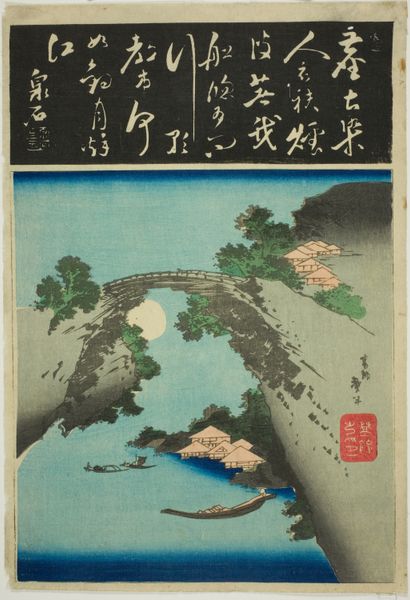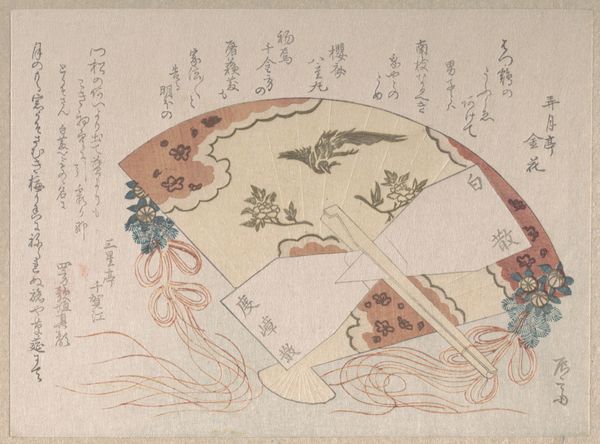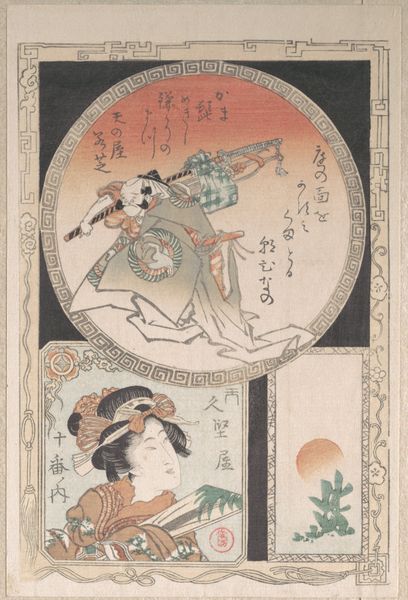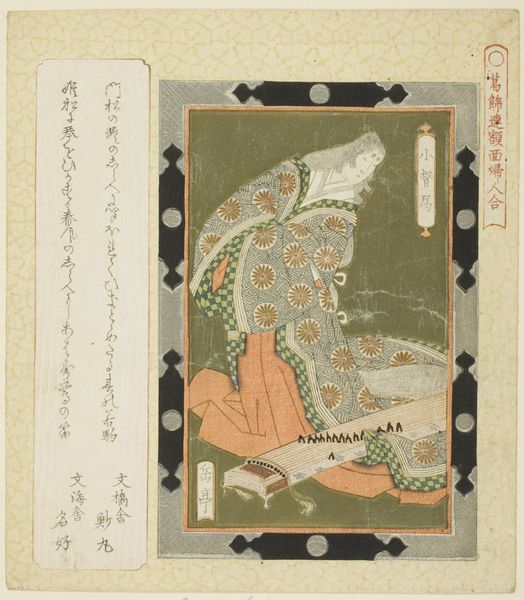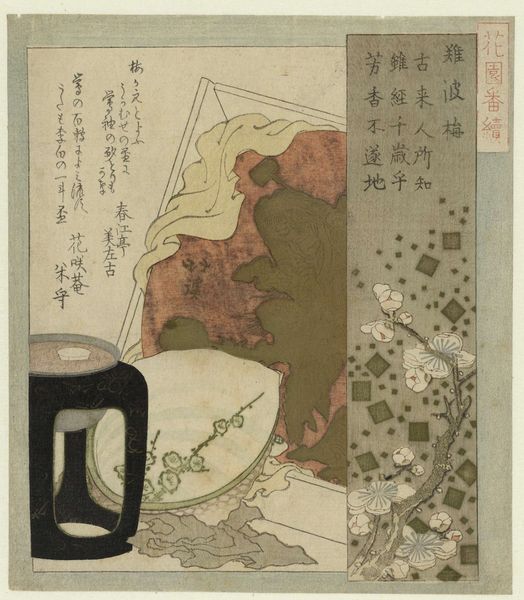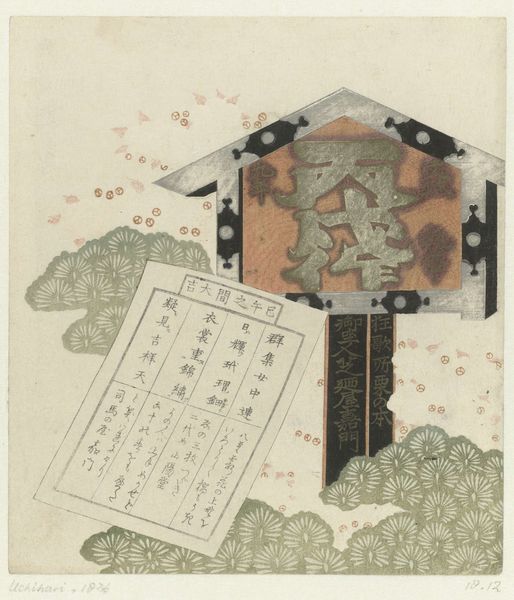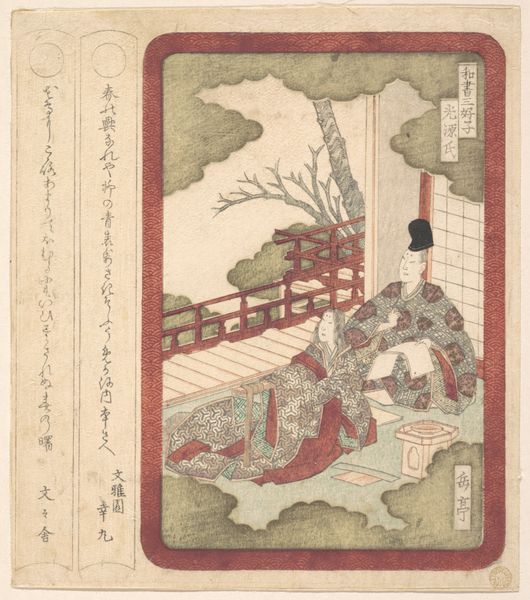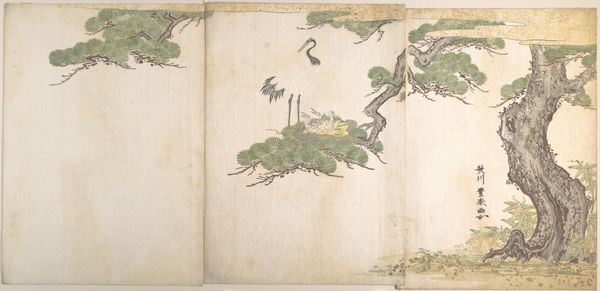![['The Sagoromo captain', 'Three gentlemen of Japanese literature'] by Yashima Gakutei 屋島岳亭](/_next/image?url=https%3A%2F%2Fd2w8kbdekdi1gv.cloudfront.net%2FeyJidWNrZXQiOiAiYXJ0ZXJhLWltYWdlcy1idWNrZXQiLCAia2V5IjogImFydHdvcmtzL2EyNTVhMTI5LTI3ZDQtNDAxMS05ZmQyLWE1M2FkN2ExMWE1Mi9hMjU1YTEyOS0yN2Q0LTQwMTEtOWZkMi1hNTNhZDdhMTFhNTJfZnVsbC5qcGciLCAiZWRpdHMiOiB7InJlc2l6ZSI6IHsid2lkdGgiOiAxOTIwLCAiaGVpZ2h0IjogMTkyMCwgImZpdCI6ICJpbnNpZGUifX19&w=3840&q=75)
['The Sagoromo captain', 'Three gentlemen of Japanese literature'] 1819 - 1820
0:00
0:00
yashimagakuteiwudaoyueting
Rijksmuseum
print, woodblock-print
#
water colours
#
narrative-art
# print
#
asian-art
#
ukiyo-e
#
figuration
#
woodblock-print
#
line
#
watercolor
Dimensions: height 181 mm, width 207 mm
Copyright: Rijks Museum: Open Domain
Curator: What a gem this woodblock print is! Yashima Gakutei created "The Sagoromo Captain," also known as "Three Gentlemen of Japanese Literature," between 1819 and 1820. It just feels so delicately balanced, doesn't it? Editor: My immediate impression is dreamy—almost ethereal. The muted watercolours and the floating figures really contribute to that. I am interested in what specific dyes the artist utilized, since these softer palettes would have required precise layering, demanding particular skills for printmakers at the time. Curator: I'm glad you noticed that feeling of dreaminess. Gakutei often infused his work with that sense of wistful beauty, drawn, in this case, from classical literature. There’s a lovely fragility to the scene, enhanced by the almost transparent washes. The line work itself looks so effortless. Editor: It also underscores the highly collaborative nature of Ukiyo-e. It wasn’t just Gakutei envisioning this. A team of skilled block carvers and printers shaped this final outcome from initial design to this actual object. Think about the wood they’re using, the knives... What does that process communicate about aesthetic values? Curator: Exactly, and I think the very act of carving those blocks lends a sense of permanence to what is, at its heart, an image of fleeting beauty. It’s like capturing smoke in a bottle, or holding moonlight in your hand. Editor: Also interesting to note is that printmaking enabled wider access and more possibilities of circulation than, say, one-off paintings. We should recognize Ukiyo-e, and pieces like this, for expanding the reach and audiences of cultural images. Curator: True. And within that expanded reach, each individual impression takes on a slightly different character. The subtle variations in inking, the paper itself...each tells a story of its own making and distribution. It feels as though the stories the print illustrates gain another, even more interesting dimension through the print-making craft itself. Editor: A layered material and cultural legacy, for sure. Considering what would become popularized in future decades through forms like photography, prints like these helped cement Japan's global appeal through reproducible images. Curator: In short, it’s a potent reminder that what we perceive as timeless is always, in some way, shaped by the hands—and tools—of its own time.
Comments
No comments
Be the first to comment and join the conversation on the ultimate creative platform.
